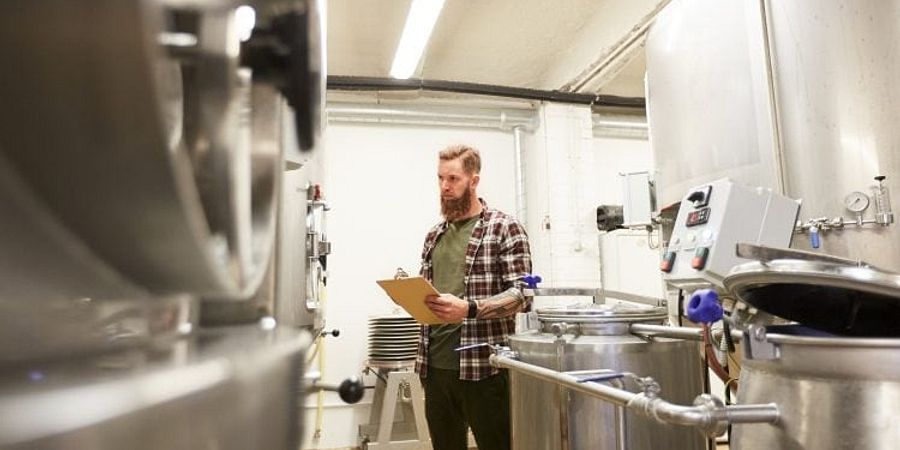The Best Soups, Broths, and Sauces: Your Ultimate Guide to Buying the Right Steam Kettle

You’ve started up a sandwich restaurant that seems to be doing well. You’ve got a good string of customers who are coming in for their lunch breaks but you could have even more. You need sides to go with those sandwiches.
Sides, such as soups. You’ve played around with the idea in your head until one day you decide to go out and get a steam kettle. There are many different types out there that come in varying shapes and sizes.
It can be tough to find the right one for the job. To help you up your customer count with delicious hot soup, here is a guide on how to pick out the best steam kettles for your commercial kitchen.
1. Types of Steam Kettles
Before you decide on features and sizes, it's best you familiarize yourself with the types of steam kettle options. We're going to go over direct steam, self-contained, tilting and stationary kettles.
Direct Steam
In the case of all kettles, steam enters the jacket and condenses on the wall of the kettle. The condensing steam transfers heat throughout the kettle and then condenses back into the water.
The source of the steam is different for every kettle. In the case of the direct steam kettles, it comes from an outside boiler. This keeps the design simple but you'll have to do a bit of maintenance on it.
It will probably need to be blown out a few times a day so the condensation doesn't build up on the main steam supply line.
Self-Contained
These kettles have a closed steam system. The jacket is filled up with water and the steam is created via an electric or gas boiler that sits in a housing on the kettle's stand.
This design makes them a little more complicated than a direct steam kettle and it causes them to be a little more expensive to buy. On a good note, thanks to this design they work in a variety of different kitchens because they can adapt to both electrical and gas plumbing.
The maintenance is easier too. All it takes is a bit of venting and refilling to keep it going.
Tilting
Tilting steam kettles make it easier for you to pour food out of them. They come in many shapes, sizes, and mounting styles. For the most part, they operate with a wheel.
Some models take out the manual work by tilting via an electric motor. If your worried about spilling food all over the place don't. All models have a lip that guides the food where you need it to go.
Stationary
Stationary steam kettles are as the name suggests. Stationary. They don't tilt at all and instead use a tangent valve located at the bottom of the kettle.
Stationary kettles almost exclusively come as large models. They're a good option if your restaurant sees a lot of traffic and you need to serve 200 gallons of food at the same time.
2. Volume and Size
Again, steam kettles come in a wide array of different shapes and sizes. Your choice of purchase is going to depend heavily on two things. The first one is the amount of food that you'll need to cook and the second is how often you'll need to use it.
If the only thing you're going to use it for is to serve the soup of the day, yes, you'll need to cook a lot of batches but you can probably do it without using a big kettle.
You could save a lot of money and keep the soup fresh by cooking several batches in a smaller one.
3. Gas or Electric?
When choosing gas or electric think about how much you need it to travel around your kitchen. Gas steam kettles are generally larger and cook lots of food but they aren't very mobile. Electric steam kettles are usually smaller but you'll have more of a choice of where to put it or store it.
On top of mobility, you also need to consider how often you're going to use it and how much your choice will affect the energy costs in your kitchen.
4. Your Controls
When picking out your kettle you need to decide how you want to control it. Most of them come with a timer, thermostat, safety valve, and pressure limit switch. Some manufacturers are changing things up by switching to electronic controls though.
These controls include programming options for cooking, chilling, and pressure and temperature limits.
5. Special Features
Steam kettles come with many special features that you don't need per se but they're nice. Some have extra water connections so cold water can run into the jacket once the food is done.
It sounds like a useless feature but it starts the process of getting the food ready to go in the refrigerator. This will allow your restaurant to meet food temperature standards.
Some kettles come with measurement markings on the side so you always know how many ingredients you should be adding in.
How to Pick Out the Best Steam Kettle for Your Commercial Kitchen?
If you're planning on preparing soups, broth, or sauces in your restaurant you're going to need a steam kettle. There are a lot of different ones out there ranging in varying shapes, volume sizes, and functions. If you use this buying guide though, you're sure to find the best one for your commercial kitchen.
Share This!